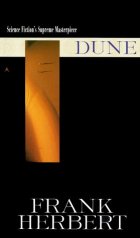Second Foundation is broken up into two stories, just like Foundation and Empire. The first story, Search by the Mule, takes up only about 1/3 of the book. It takes place 5 years after the events of Foundation and Empire. The second story, Search by the Foundation, takes place about 60 years later. The second story is significantly better than the first. When comparing the two, Search by the Mule seems rushed and not very interesting, while Search by the Foundation is more developed, especially when it comes to characters, plot, and action.
The first story focuses on the search for the Second Foundation by Bail Channis and Han Pritcher. The Mule recruits Bail Channis because he feels that an Unconverted mind might shed some new light on the thus far fruitless search for the Second Foundation. The Mule is perfectly satisfied that Han Pritcher is 100% loyal, but is concerned that he might not be performing as well as he could had there been no emotional control.
Each section is broken up by ‘interludes’ which are from the Second Foundation’s point of view. They plan to reveal themselves to The Mule “in a sense”, hoping to trap and defeat him. The Mule however has a few tricks up his sleeve, or so he thinks, which will hopefully ensure victory over the Second Foundation. I think that this story could have had the same effect while being much shorter. There was a lot of dancing around with witty banter that didn’t really add to the story. The final battle was interesting, but when I compare the first story to the second, it seems that Asimov simply rushed this one.
The second story focuses on the search by the Foundation for the Second Foundation. This is probably one of the best stories in the whole Trilogy. One of the main characters is 14 year old girl named Arcadia “Arakady” Darrel. Her father, Dr. Darrel, is an electroneurologist, in a rather new field of science that studies brain wave patterns. He’s also the son of Bayta Darrel, the woman that originally kept The Mule from finding the location of the Second Foundation.
The story begins as a stranger named Palleas Anthor tries to get into the house through Arcady’s window. She was in the process of dictating a research project about The Mule and the effect he had on Seldon’s Plan. This man asks to speak with her father, but Arkady is immediately suspicious and tries to get additional information. They deny this, and eventually start having meetings with other conspirators downstairs while Arcady is up in her room.
Arcady manages to befriend a boy at school and convince him to let her use a remote recording device he had been tinkering with. She plants the device and starts to listen in on the conversations of the conspirators (Dr. Darrel, Palleas Anthor and several others). Essentialy they have uncovered that the brain patterns of key officials have been tampered with, probably by the Second Foundation. These men don’t like having their fate dictated by others, so they set out to find and defeat the Second Foundation.
Eventually they plan to send Homir Munn, a noted Mule memorabilia collector, to visit Kalgan to search for clues to the location of the Second Foundation in the Mule’s Palace. The plot really picks up after Dr. Darrel’s maid discovers that Arcady is missing and has left a note saying essentially that she has stowed away on Homir Munn’s ship. Dr. Darrel knows he can’t interfere without bringing attention of the Second Foundation to the operation, so simply sends a not to Homir’s ship and hopes for the best.
As with the first story, sections are broken up by focusing on conversations between the First Speaker and his apprentice from the Second Foundation. Seldon’s Plan is on the edge of failing, and unless all of their plans go perfectly, there may be no chance to recover. The apprentice is asked to analyze a specific problem and come up with a proposed solution which can help adjust the Plan.
Asimov keeps the reader guessing throughout this story, but also provides plenty of clues. I’m fairly certain that anyone that hasn’t read any of the prequels will be surprised at the true location of the Second Foundation. As with many of Asimov’s other stories, he ties up all of the mysteries in a neat little bow toward the end. Since I read this for the second time, I was able to keep an eye out for many of these clues. Although I remembered the real location of the Second Foundation, I could easily see how well Asimov hid it in his writing. Overall, I’d say this was my second favorite volume of the Trilogy, mainly because of the weak first part.



